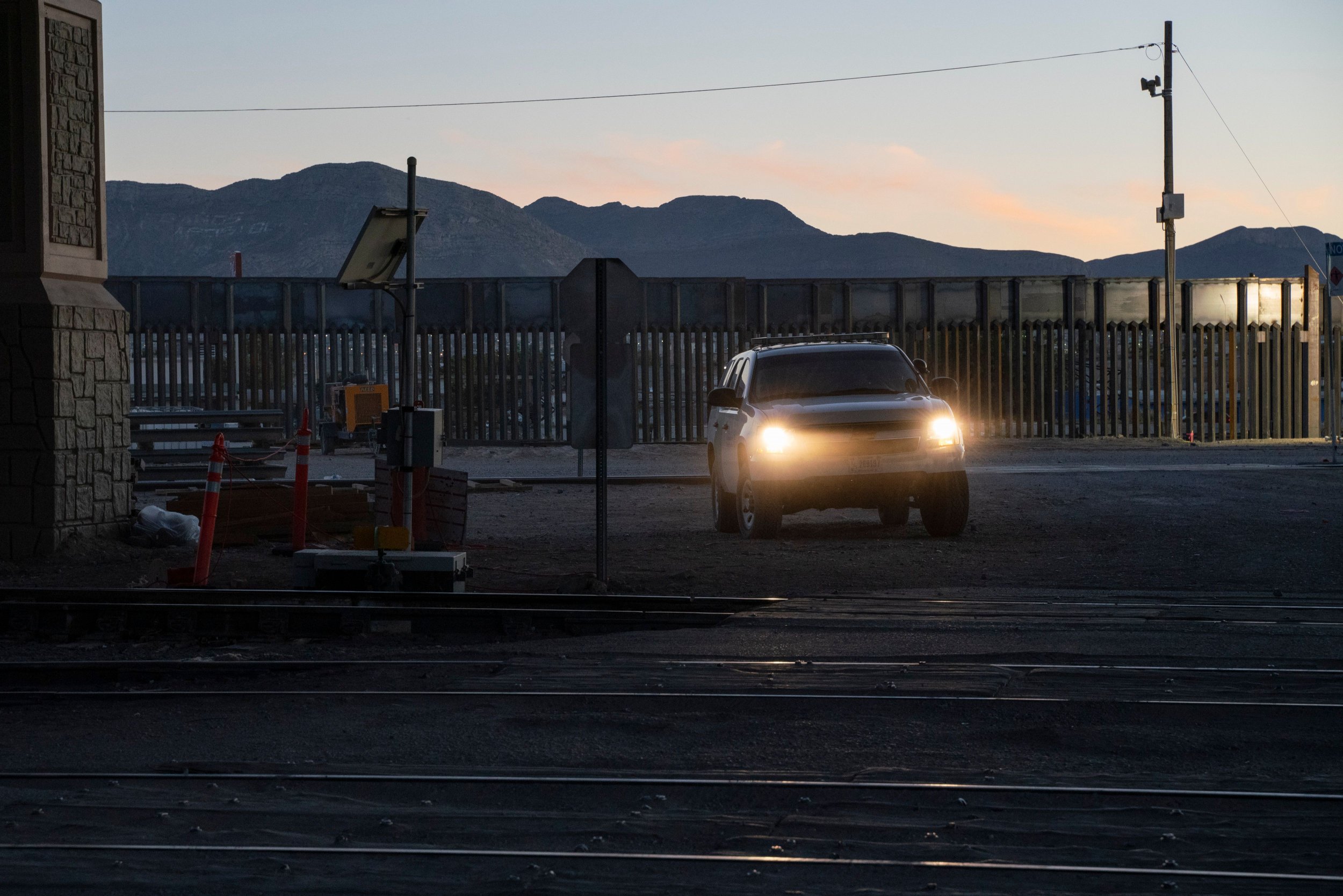
Two U.S. Army soldiers sat in an unmarked Chevrolet Tahoe owned by U.S. Customs and Border Protection on the west side of an El Paso County, Texas, colonia known as Las Pampas.
It was April 13, and the Army sergeant and private had set up a hasty observation post north of the Rio Grande but south of the border fence in U.S. territory. The soldiers were members of B Battery, 1st Battalion, 37th Field Artillery Regiment, out of Joint Base Lewis-McChord in Washington state. The unit, part of the Southwest border mission President Donald Trump first ordered in October 2018, recently had its deployment extended to September.
At roughly 2 p.m. local time, the soldiers observed five to six individuals dressed in green pixelated military camouflage uniforms and carrying weapons, which appeared to be the FX-05 Xiuhcoatl, an assault rifle designed and built for the Mexican armed forces.
The armed men swiftly approached the U.S. service members, crossing over from the Mexican side of the Rio Grande into U.S. territory and ordering the soldiers out of their vehicle at gunpoint.
What transpired on that afternoon of April 13 near the small town of Clint, Texas, underscores the confusion between the physical location of the border fence and where the geographical U.S.-Mexico border begins and ends. In Texas, the border fence does not align perfectly with the topography of the precise location of the U.S.-Mexico border, and this creates a buffer zone between the actual, often invisible, border and the fence.
Additionally, while parts of the Texas border with Mexico are fenced, much of it is not because of a variety of reasons, including ongoing litigation, private property rights, treaty provisions and floodplains.

Newsweek obtained a copy of the serious incident report generated 30 minutes after Mexican military members briefly detained and held at gunpoint the U.S. soldiers after believing they were in Mexican territory, when in fact the Mexican military had unknowingly crossed into U.S. territory. The report was reviewed by U.S. Army Lieutenant Colonel Timothy Gatlin, the commander of 1st Battalion, 37th Field Artillery Regiment, and briefed to U.S. Army Lieutenant General Jeffrey Buchanan, the commanding general of U.S. Army North.
The U.S. soldiers said the Mexican soldiers moved tactically fast on their U.S. Customs and Border Protection (CBP) vehicle, which was unmarked. The Army soldiers did not have enough reaction time to activate a 911 emergency on their Shout Nano, a cellphone-sized, two-way GPS tracking device that also doubles as an emergency beacon when soldiers are in need of additional military units.
Speaking in Spanish, the Mexican soldiers instructed the sergeant and the private to move to the front of their vehicle, where they were "gently searched," according to the incident report. The sergeant's service pistol, the Beretta M9, was removed from his hip by the soldiers and thrown inside the U.S. government vehicle.
The U.S. soldiers reported they did not see "any identifiable seals or symbols" on the Mexicans' vehicle and "could not identify any patches or name tapes on the uniform except for the Mexican flags."
The deputy director of public affairs for NORAD and U.S. Northern Command, John Cornelio, said in a statement to Newsweek on Friday that a joint inquiry by CBP and the Defense Department revealed the gunmen to be Mexican military members who believed the U.S. soldiers were south of the Mexican border.
"After a brief discussion between the soldiers from the two nations, the Mexican military members departed the area. The U.S. soldiers immediately contacted CBP, who responded quickly. Throughout the incident, the U.S. soldiers followed all established procedures and protocols," the statement said.
The U.S. service members reported hearing someone from the south side yell vámonos in Spanish. The Mexican soldiers went back to their vehicle, described as a "dark blue Ford pickup truck with a tactical rack in the back." The Ford pickup departed the area, heading westbound on the Mexican levee.
After the encounter, the service members notified CBP by service radio. CBP agents responded to their location roughly 10 to 12 minutes after the incident, according to the report.
Once on-site, the CBP agents backtracked the footprints of the Mexican military members and determined the individuals entered U.S. territory about 50 feet north of the Rio Grande, the report said. Members of 1st Battalion, 37th Field Artillery Regiment, responded to the location to check on the well-being of their fellow soldiers.
Newsweek contacted CBP about the incident but did not hear back before publication.
Uncommon Knowledge
Newsweek is committed to challenging conventional wisdom and finding connections in the search for common ground.
Newsweek is committed to challenging conventional wisdom and finding connections in the search for common ground.
About the writer
James LaPorta is a senior correspondent for Newsweek covering national security and military affairs. Since joining the magazine, Mr. LaPorta has extensively ... Read more
To read how Newsweek uses AI as a newsroom tool, Click here.








